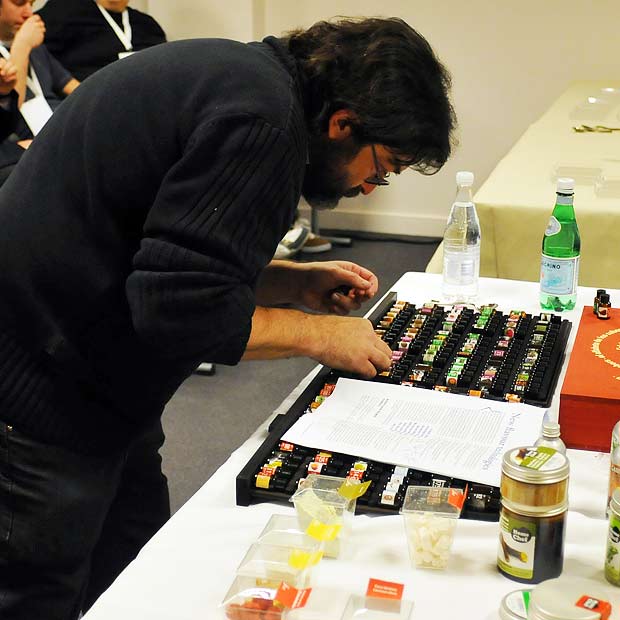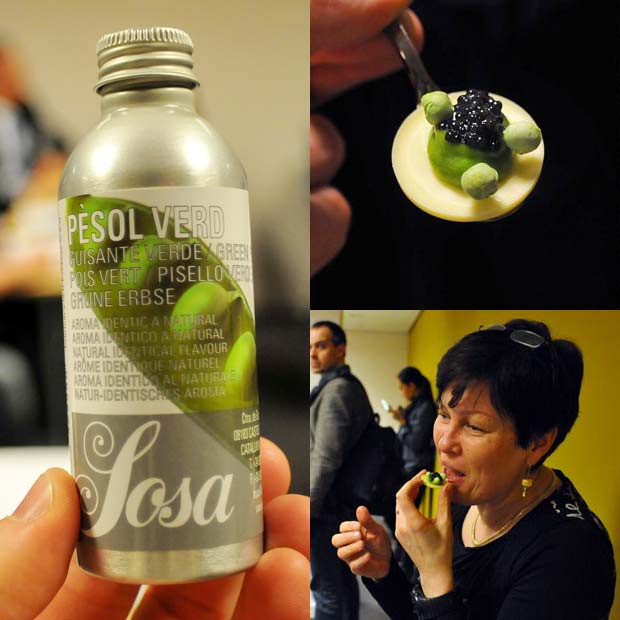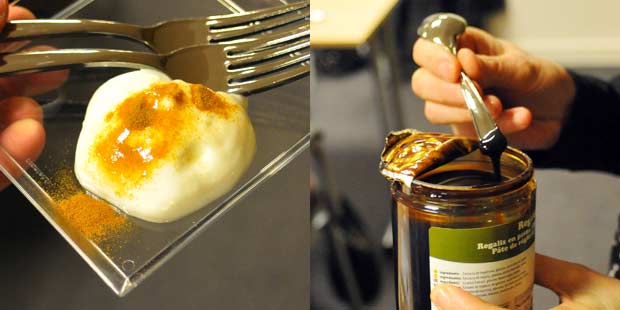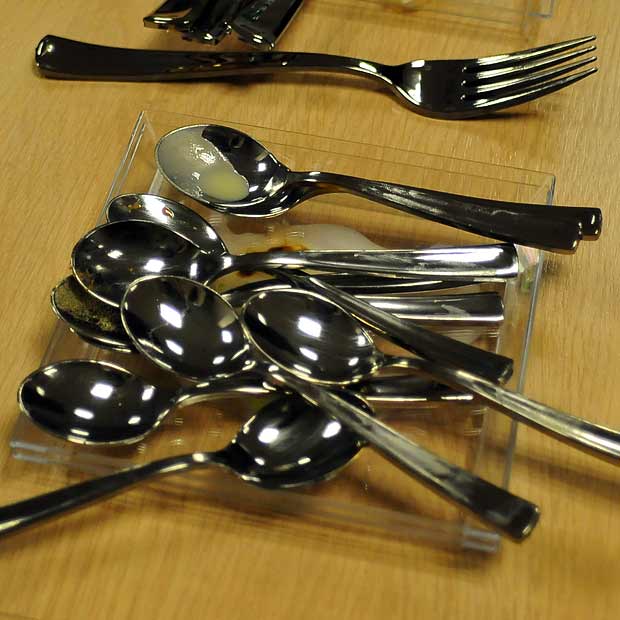You can tell that the days were packed during my visits to Belgium (The Flemish Primitives) and Denmark (Molecular gastronomy seminar) in March by the fact that I still blog about it in June. After the sous vide masterclass I attended a master class on taste technologies hosted by Quico Sosa (the man behind the Sosa company) and chef Dave De Belder. Many may frown upon flavors and their use in high end gastronomy, but anyone who considers using flavors as a shortcut to better cooking should rethink this as both successes and disasters are amplified (interestingly, Bruno Goussault said exactly the same about sous vide in the preceeding masterclass).
In haute cuisine, technology must be at the service of flavour and not otherwise. We must escape from the myth that everything was better in the past and also, that everything new is better. (“The technology of flavours”, Sosa ingredients)
From his presentations, advocating flavors and essences, one could easily think Quico Sosa was a chemist or a food technologist because of his very pragmatic approach to flavors and flavorings (in fact he studied philosophy). His motto could easily be summed up as: Use natural whenever possible, but understand when technology can give nature a boost! -If something is not beautiful it does not exist, says Quico Sosa. A fruit without flavour does not exist. We should of course use fresh fruit whenever possible, but we should not be afraid of using flavors.

Mackerel with carrot is a classic pairing, but the challenge for any chef is to capture the freshness of the carrot. The piece of mackerel served with carrot powder was a very good example of this. I think I’ve never tasted such a concentrated yet fresh carrot!
-We don’t know the flavor of a fresh product any more because we can’t buy it, he says and continues: If you go to a restaurant and it’s not tasty, you should complain. Today chefs have no excuse! Another example mentioned was mousse of lychees. It’s difficult to make because the flavor is so dilute, especially if it is also combined with other, stronger flavors. -In this case you need a bit of technical help, says Quico.

Quico Sosa composes flavors as were they perfumes. He always tries to use natural extracts, but adds pure compounds as required to achieve the desired flavors.

The essence of pea skins (left) gives the creamed peas an incredible freshness. The pea cream was served on a thin disk of white chocolate with royal Beluga caviar and freeze dried whole peas (top right). Anu Hopia, professor at University of Turku and fellow food blogger (molekyyligastronomia.fi, google translation) is ready to taste (bottom right).
After the session I asked Quico about how he perceives the natural/artificial debate, and his reply could just as well have come from a chemist: -The most dangerous thing we sell is natural nutmeg essence, says Quico. (due to myristicin in case you wondered!)

Yoghurt foam flavored with bergamot and sprinkled with liquorice powder (left). Liquorice extract is quite yummy just by itself (right).
A handout on the technology of flavors was provided during the session. Apart from repeating the common misconception of the tongue map of tastes it is well worth reading, in particular the second part on “New flavour technologies” which covers the different functions the flavor products may have as well as the different techniques used in their preparation (freeze drying, grinding/conching, concentration at low temperature/pressure, cold confit/candization, extractions). In a restaurant setting the use of flavor products and aroma extracts is quite different from the typical industrial setting. Examples include:
- provide variation in textures
- separate flavors from their texture/color
- enhance flavors that fade during cooking or are particularily unstable/weak
- use of aromas to scent the dining room
- experiments with flavor pairing
As a chemist I guess I’m quite open minded with regards to the use of flavors. But how do chefs see this? Is it OK to use flavors or is it regarded as cheating in high end restaurants?

The master class session with Quico Sosa included countless samples for tasting


i think there is a time and place for everything and technology can be of great benefit to the final product if used with restraint. Its about balance and if added flavors provides balance and a better quality dish then why not.
I just think that if we as chefs are using these essences it kind of makes what the farmers are doing pointless. They put in a lot of hard work and make great products. Essences should be used to make something that doesn’t or cant be fresh such as airplane food or cafeteria food better. It just seems odd to eat a fresh, vine ripened, juicy grape coated in essence.
Basically, its about achieving a precise flavor you cannot get by other means. In the hands of someone imprecise, it doesn’t work. But it is often used to great effect in more really excellent restaurants than you could shake a stick at, where it is used alongside excellent farm products to create delicious and novel things.
Flavor extracts are literally one of the oldest tricks in the book when it comes to cocktail making: Gin is really just a incredibly complex infused vodka (obvious this doesn’t entirely cover genever or the Old Tom style), and bitters- herb-infused high proof ethanol- are one of the cornerstones of the original definition of “cocktail”.
Arielle: Yes – cocktails are excellent examples of flavor extracts where many leave their “flavor objections”behind.